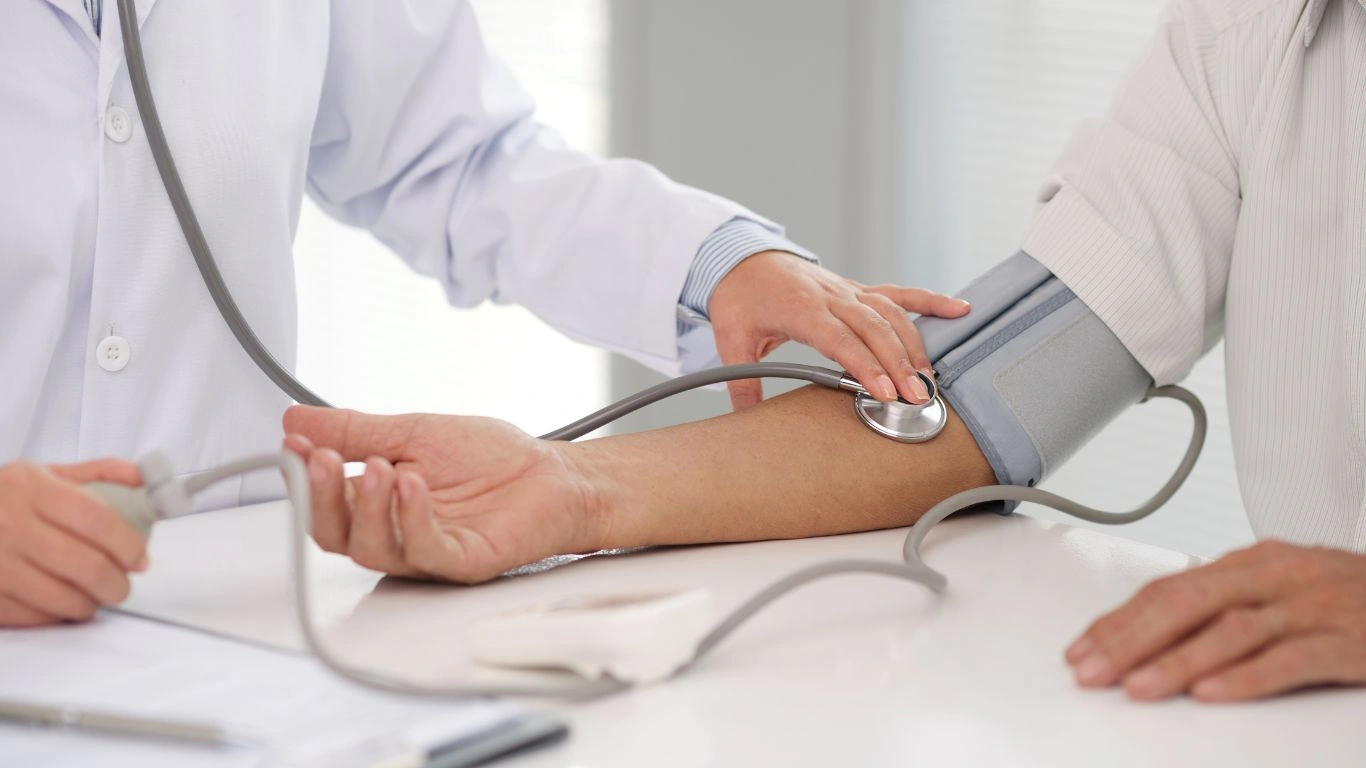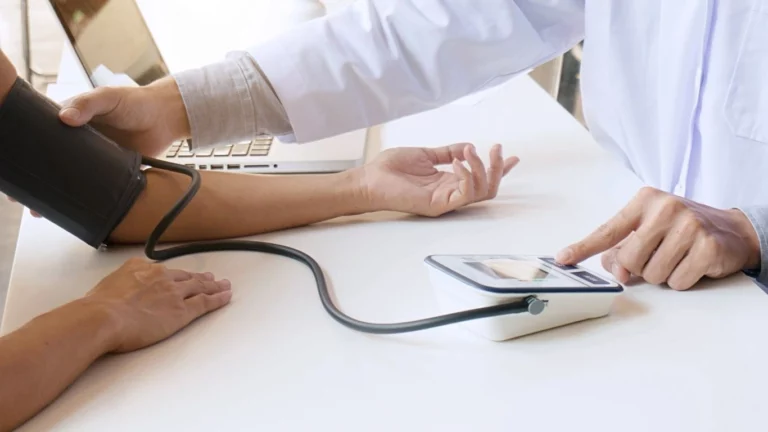7 Powerful Healthy Fats to Lower Blood Pressure Naturally
When it comes to managing high blood pressure naturally, healthy fats that reduce blood pressure are often overlooked. Many people assume all fats are bad, but the truth is, certain fats can actually support heart health and help keep blood pressure in check. As someone who has spent years guiding patients through hypertension management, I’ve seen firsthand how the right dietary choices can make a world of difference. So, let’s break the myth and dive into the best healthy fats that can work wonders for your blood pressure.
The Role of Healthy Fats in Lowering Blood Pressure

For decades, dietary fat was demonized, and people were told to avoid it at all costs. But science has flipped that idea on its head. The key isn’t cutting out fat entirely—it’s choosing the right types. Healthy fats, particularly monounsaturated and polyunsaturated fats, help reduce inflammation, improve cholesterol levels, and even relax blood vessels, making it easier for blood to flow.
Monounsaturated Fats: The Heart’s Best Friend
Monounsaturated fats are fantastic for heart health, and they play a crucial role in lowering blood pressure. These fats help increase “good” HDL cholesterol while reducing “bad” LDL cholesterol. More importantly, they improve blood vessel function, reducing strain on the heart.
Some of my top recommendations for monounsaturated fats include:
- Olive Oil: A Mediterranean staple, olive oil is rich in antioxidants that support heart health.
- Avocados: Creamy, delicious, and packed with potassium—one of the most essential minerals for blood pressure control.
- Nuts (Almonds, Cashews, Pecans): Loaded with heart-healthy fats, fiber, and magnesium, all of which support lower blood pressure.
Personally, I always recommend my patients switch to extra virgin olive oil for cooking and drizzle it on salads. It’s one of the simplest dietary swaps with a big impact.
Polyunsaturated Fats: Omega-3s for Blood Pressure
Polyunsaturated fats, particularly omega-3 fatty acids, are some of the most powerful tools for blood pressure management. They help reduce inflammation, decrease arterial stiffness, and even lower triglyceride levels.
Foods rich in omega-3s include:
- Fatty Fish (Salmon, Mackerel, Sardines): These fish are packed with EPA and DHA, two types of omega-3s known for reducing blood pressure.
- Flaxseeds and Chia Seeds: Plant-based sources of ALA (alpha-linolenic acid), which the body can convert into beneficial omega-3s.
- Walnuts: Not only do they contain omega-3s, but they’re also rich in antioxidants that support cardiovascular health.
One of my favorite tips? Adding ground flaxseeds to smoothies or oatmeal. It’s a tiny change that can have a huge impact on blood pressure over time.
How to Incorporate More Healthy Fats Into Your Diet

Now that we know which fats are beneficial, the next step is figuring out how to add them to your diet without going overboard on calories. Here are some practical and easy ways:
- Swap Butter for Olive Oil: Whether sautéing veggies or dressing salads, olive oil is a fantastic alternative.
- Snack on Nuts Instead of Chips: A handful of almonds or walnuts can curb cravings and support heart health.
- Add Avocado to Your Meals: Mash it on toast, blend it into smoothies, or add it to salads for a creamy, nutritious boost.
- Include Fatty Fish in Your Diet Twice a Week: Grilled salmon or sardines make for an excellent heart-healthy meal.
Making these small changes can have a profound effect on blood pressure over time. I’ve seen patients cut back on medications simply by adjusting their diets—it really can be that powerful.
Plant-Based Healthy Fats That Reduce Blood Pressure

We’ve talked about olive oil, nuts, and omega-3-rich fish, but what if you follow a plant-based diet? No worries—there are plenty of plant-based healthy fats that help naturally lower blood pressure. Many of my patients who are vegan or vegetarian have successfully improved their heart health with these options.
Flaxseeds and Chia Seeds: Tiny But Mighty
These tiny seeds are absolute powerhouses when it comes to heart health. They’re rich in alpha-linolenic acid (ALA), a type of omega-3 fatty acid that helps reduce inflammation and supports better blood flow.
How to use them? Here are some simple ideas:
- Sprinkle ground flaxseeds over oatmeal or yogurt.
- Add chia seeds to smoothies or make chia pudding.
- Use flaxseeds as an egg substitute in baking (perfect for my vegan patients!).
One of my go-to tips? Soaking chia seeds overnight in almond milk with a little cinnamon—tastes amazing and keeps you full for hours.
Coconut and MCT Oil: A Controversial Yet Powerful Fat
Coconut oil has stirred up quite a debate in the nutrition world. While it’s high in saturated fats, research suggests that its medium-chain triglycerides (MCTs) may actually provide heart benefits, including modest improvements in blood pressure. However, the key here is moderation.
Some benefits of MCT oil and coconut oil:
- Supports metabolism and energy levels.
- May promote better circulation and vascular health.
- Can be a good alternative to processed vegetable oils.
If you use coconut oil, I recommend sticking to unrefined, virgin coconut oil and using it sparingly in cooking or baking.
Dark Chocolate and Cocoa: A Delicious Way to Lower Blood Pressure
Yes, you read that right—dark chocolate can be heart-healthy! It’s packed with flavonoids, which help improve nitric oxide levels in the blood. This, in turn, relaxes blood vessels and lowers blood pressure.
Not all chocolate is created equal, though. Here’s what to look for:
- Choose dark chocolate with at least 70% cocoa for maximum benefits.
- Avoid chocolates with excessive sugar and artificial additives.
- Stick to a small serving—about one ounce per day is enough.
Personally, I love recommending a square of dark chocolate after dinner as a heart-friendly treat. It satisfies the sweet tooth without the guilt!
Common Mistakes People Make with Healthy Fats

While adding healthy fats to your diet is a great move, I’ve seen some patients make a few mistakes that can backfire. Here are some pitfalls to avoid:
Overdoing It on Calories
Even though healthy fats are beneficial, they’re still calorie-dense. Eating too much can lead to weight gain, which in turn can increase blood pressure. Portion control is key.
Try these swaps to keep calories in check:
- Use one tablespoon of olive oil instead of drenching your salad.
- Stick to a small handful of nuts—no need to eat the whole bag!
- Measure out flaxseeds and chia seeds rather than eyeballing them.
Choosing the Wrong Cooking Oils
Not all oils are created equal. Many people unknowingly use refined vegetable oils (like soybean or corn oil), which can be pro-inflammatory. Instead, opt for:
- Extra virgin olive oil for salads and low-heat cooking.
- Avocado oil for high-heat cooking like stir-fries.
- Coconut oil in moderation for baking or light sautéing.
Skipping Other Heart-Healthy Foods
Healthy fats are just one piece of the puzzle. If you’re eating well but still consuming too much processed food, sodium, and sugar, your blood pressure may still remain high.
Pair your healthy fats with:
- Leafy greens like spinach and kale.
- Potassium-rich foods like bananas and sweet potatoes.
- Whole grains like quinoa and oats.
It’s all about balance. I always tell my patients, “Think of your diet as a team—healthy fats work best when they have the right teammates!”
Final Thoughts on Healthy Fats and Blood Pressure
Incorporating healthy fats that reduce blood pressure into your diet doesn’t have to be complicated. Small, intentional changes—like swapping in olive oil, snacking on walnuts, or adding flaxseeds to your breakfast—can have a powerful impact on your heart health.
From my experience working with patients, those who embrace these changes often notice improvements in their energy levels, mood, and overall well-being. And the best part? These foods are delicious! Eating for heart health doesn’t mean sacrificing flavor—it means making smarter choices.
So, what’s one healthy fat you’re going to add to your meals this week? Let me know in the comments!
Case Studies & Real-Life Examples

Over the years, I’ve worked with many people who have successfully lowered their blood pressure by making simple changes to their diet—especially by incorporating the right healthy fats. Let’s talk about a few real-life examples that might inspire you!
Case Study #1: Sarah’s Switch from Processed to Whole Fats
Sarah, a 52-year-old teacher, struggled with borderline high blood pressure and constant fatigue. She ate a low-fat diet but relied heavily on processed foods, thinking they were the healthier option.
When we examined her diet, I noticed she was avoiding natural fats like avocados, nuts, and olive oil, while consuming a lot of low-fat, processed alternatives that were actually high in sodium and hidden sugars.
Her changes:
- Switched to real, whole-food fats like olive oil instead of processed dressings.
- Ate a handful of almonds or walnuts daily as a snack.
- Added half an avocado to her lunch instead of low-fat spreads.
After three months? Her blood pressure dropped from 138/88 to 122/76, her energy improved, and she felt fuller for longer without craving junk food.
Case Study #2: John’s Mediterranean Makeover
John, a 60-year-old retiree, had been dealing with hypertension for years. His doctor had recommended medication, but he wanted to see if diet changes could help first. Since he loved cooking, I suggested a Mediterranean diet approach.
Here’s what he did:
- Swapped butter for extra virgin olive oil in cooking.
- Started eating more salmon, sardines, and walnuts for omega-3s.
- Enjoyed a piece of dark chocolate (70%+ cocoa) a few times a week.
Six months later, his doctor was impressed—his blood pressure went from 145/92 to 128/80 without medication. Plus, he found the diet delicious and easy to maintain!
Key Takeaways: What You Need to Remember
Now that we’ve covered all the science, practical tips, and real-life examples, let’s break it down into a few simple takeaways:
- Not all fats are bad—healthy fats can actually help lower blood pressure when chosen wisely.
- Olive oil, avocados, nuts, seeds, and fatty fish are some of the best sources of heart-friendly fats.
- Avoid highly processed vegetable oils and trans fats, which can increase inflammation and worsen hypertension.
- Pair healthy fats with other blood-pressure-friendly foods like leafy greens, whole grains, and potassium-rich fruits.
- Small, sustainable changes work better than extreme diets—find what fits your lifestyle!
FAQs
Still have questions? You’re not alone! Here are some of the most common ones I hear from patients:
Q: Can I eat fats if I’m trying to lose weight and lower my blood pressure?
A: Absolutely! Healthy fats are essential for metabolism, satiety, and nutrient absorption. The key is portion control. Stick to recommended serving sizes (like a tablespoon of olive oil or a handful of nuts) to avoid excess calories.
Q: Which oil is best for cooking?
A: For high-heat cooking, go for avocado oil because of its high smoke point. For low-heat cooking and dressings, extra virgin olive oil is ideal. Avoid vegetable oils like corn, soybean, and canola, as they can be highly processed and inflammatory.
Q: How quickly can I see results?
A: Many people start noticing changes in a few weeks—especially if they combine dietary changes with other lifestyle improvements like regular exercise and stress management. Blood pressure improvements typically show up in one to three months.
Bonus: Additional Resources & DIY Tips
If you’re ready to take action, here are some easy ways to get started:
Meal Prep Tip:
Keep a batch of homemade olive oil vinaigrette in the fridge. Mix olive oil, lemon juice, garlic, and a pinch of sea salt—it’s perfect for salads, roasted veggies, or even drizzling over grilled fish.
Healthy Snack Hack:
Make your own trail mix with almonds, walnuts, dark chocolate chunks, and dried cranberries. A handful makes for a satisfying, blood-pressure-friendly snack.
Further Reading:
- American Heart Association – More about heart-healthy diets.
- National Institutes of Health – Studies on omega-3s and hypertension.
- Mayo Clinic – Lifestyle tips for managing high blood pressure.
Appendix: References & Call to Action
References:
- Harvard T.H. Chan School of Public Health. (2023). “The Truth About Fats.” Retrieved from Harvard Public Health.
- American Heart Association. (2023). “Healthy Eating for Blood Pressure.” Retrieved from AHA.
Disclaimer: This article is for informational purposes only and should not replace professional medical advice. Always consult a healthcare provider before making dietary changes, especially if you have pre-existing conditions.
What’s next? If you found this article helpful, share it with a friend or family member! Have a personal success story? Drop it in the comments—I’d love to hear about your journey!

Dr. Gwenna Aazee is a board-certified Internal Medicine Physician with a special focus on hypertension management, chronic disease prevention, and patient education. With years of experience in both clinical practice and medical writing, she’s passionate about turning evidence-based medicine into accessible, actionable advice. Through her work at Healthusias.com, Dr. Aazee empowers readers to take charge of their health with confidence and clarity. Off the clock, she enjoys deep dives into nutrition research, long walks with her rescue pup, and simplifying medical jargon one article at a time.





